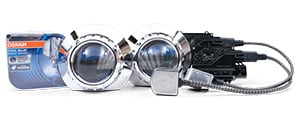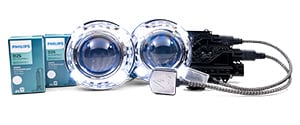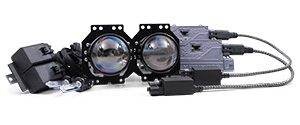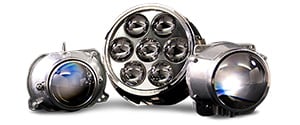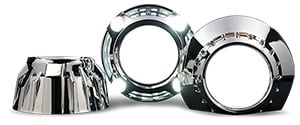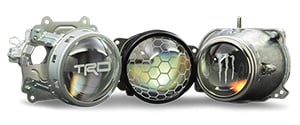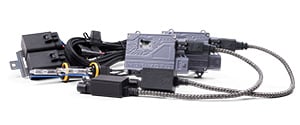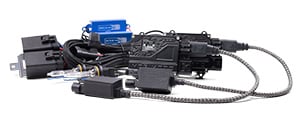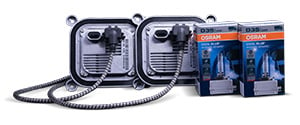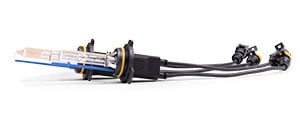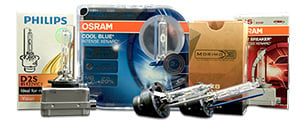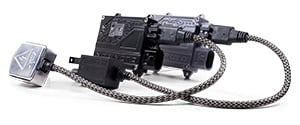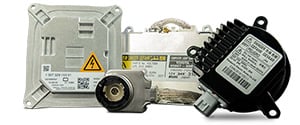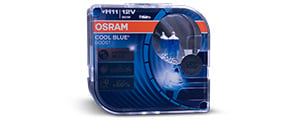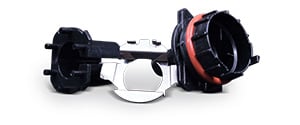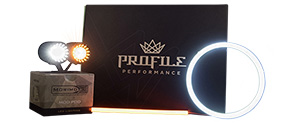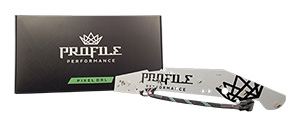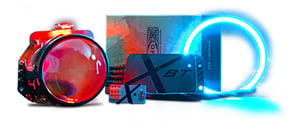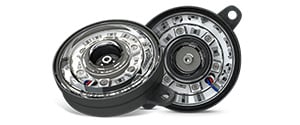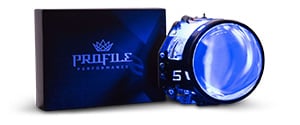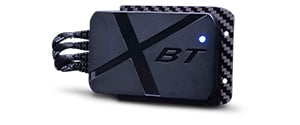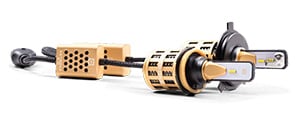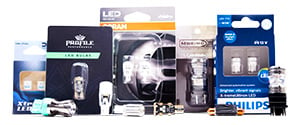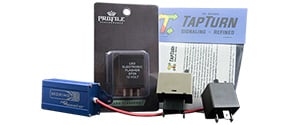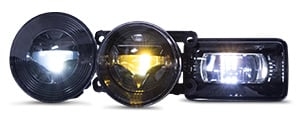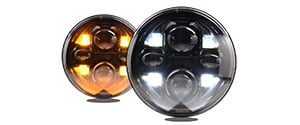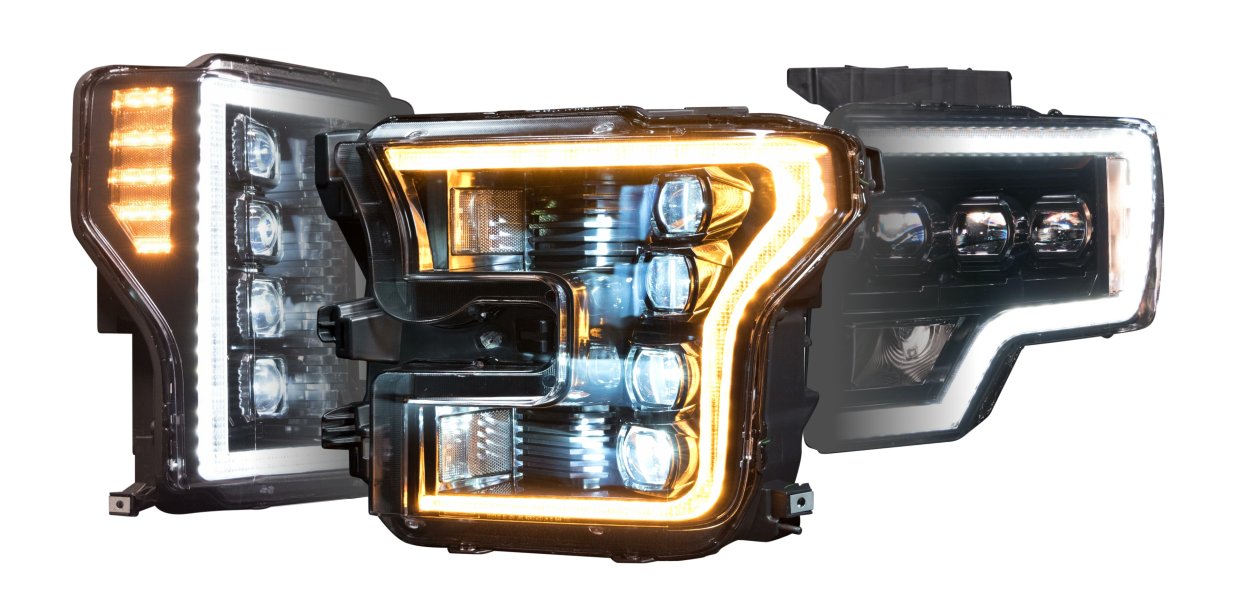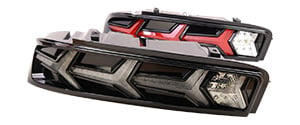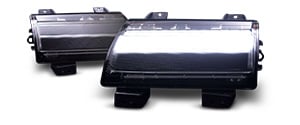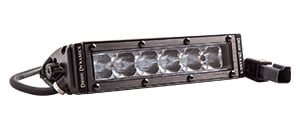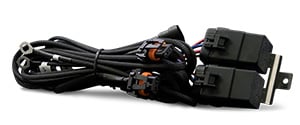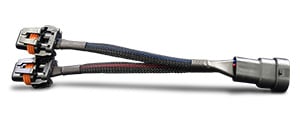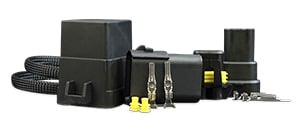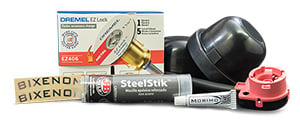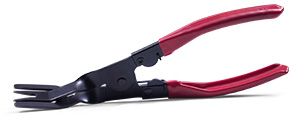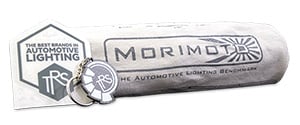In recent years, the automotive market has seen an influx of new headlight options that threaten to end the dominance of halogen lights. If you’ve ever wondered about the advantages of led vs hid headlights for cars or the differences between hid and led headlights in an effort to sort of these equally tempting options, we can understand why.
So what are HID headlights and how do they trump halogen bulbs? What are LED headlights, and how do they compare to HIDs? All of these questions deserve to be explored in detail, but let’s start with the world’s most widespread of headlights: the halogen bulb.
HALOGEN HEADLIGHTS
Halogen light is formed from a combination of argon and nitrogen gases that are trapped within a heat-resistant envelope that also contains tungsten filament. When an electrical charge is sent to the tungsten by the battery of the vehicle, the filament heats to about 2,500 degrees Celsius, and this ignites the glow (light) you can see from outside the bulb. In short, this is what’s known as the incandescence process.
Pros/cons. After a time of anywhere from 450 to 1,000 hours — around 800 hours on average — the halogen light bulb hits the end of its lifecycle. In most cases, this is due to the fracture and ultimate evaporation of the tungsten filament. The pros and cons of halogen lights break down as follows:
Advantages: low cost, simple to replace, universal, dimmable
Disadvantages: heat prone, energy intensive, extra sensitive
Accessibility. The bright lights of the halogen have made it an easily accessible light across Europe and North America. Its initial popularity was driven by how easily the halogen bulbs supplied light — and that light was superior to all pre-existing types of bulbs. Even in the face of newer, formidable competition, many drivers still prefer the adequate light and range of coverage that a standard pair of halogen bulbs can provide for a motor vehicle.
Brightness. One of the main benefits of halogen bulbs is that they emit bright, warm white light. For drivers, halogen provides sufficient light along dark roads at night, as well as during midday rain and snow storms. The light from halogen bulbs activates instantly without flickering or taking seconds to warm up. In compact vehicles as well as larger cars, halogens cast a far enough range of light to allow for safe driving on highways as well as back roads in the dark of night.
Durable. While far from the longest-lasting of headlight types, halogen lights have a reasonable lifespan of 450 to 1,000 hours. On the open road, you can get plenty of mileage from a single pair of halogen lights, because they’re:
* Super long-lasting in moderately used vehicles.
* Reasonably long-lasting in heavily used vehicles.
If your late-hour driving routine averages out to 30 minutes per day, a pair of halogen bulbs could last nearly three years at their shortest probable lifespan. Even if your daily commute includes 60 minutes of driving after sundown, and you total around 350 hours per year of usage, halogen bulbs could last anywhere from eighteen months to three years, depending on the lifespan of a given pair.
Practical. For the car owner who only drives short distances each day, halogen lights are often the best option. There’s not much point investing in fancier lights when you’re not a frequent driver — especially when you’re not even a nighttime driver. For example, if you only use your car to go grocery shopping every Tuesday and Thursday afternoon, chances are that you seldom use headlights one way or the other. No sense in sinking hard-earned money into fancier lights — unless you’re lighting nerds like us. We might anyway.
Affordable. Regardless, one of the biggest advantages of the halogen light is its low cost, which takes no skin off your back when you need to buy a replacement for one or both. A halogen headlight bulb typically sells for around $15, so if you do perform the change-out work yourself, you’d pay roughly $30 every two years to maintain halogen headlights on your vehicle. When you compare this to some of the other costs that are bound to go into the upkeep of your ride during a given year, the price that you’d pay for replacement halogen lights is one of the cheapest things on the checklist.
Changeable. When halogen bulbs do need to be replaced, the change-out process is simple. If you’re comfortable performing minor maintenance under the hood, it’s relatively easy to pop it open, twist out the old bulbs, and slot the new ones into place — the whole job can usually be completed in a matter of minutes. Basically, it can all be broken down as follows:
* Open the hood of the vehicle.
* Unscrew the old bulbs and remove.
* Slot new bulbs into place and fasten.
Of course, this assumes you can access the back of the headlight without removing the bumper, as many modern cars unfortunately now require.
Even if you do prefer to have the work done by a professional, the cost for labor is relatively low. As such, halogen lights — unlike many other car parts — won’t sideline your vehicle for any length of time when they fail.
Adjustability. Another advantage is the dimmable quality of halogen lights. Since the light can be emitted at several levels of intensity, manufactures are able to produce bulbs at different levels of brightness. Halogen lights can either switch from low to high beam with the flip of a switch, or a car might contain four headlights — two for low beam and two for high beam intensities. Your car can be equipped for early evenings and rainy days, as well as late-night drives through dark areas, and you don’t have to pay a fortune to have these lighting capabilities.
Universality. The halogen light has been the most widespread and popular type of headlight, both domestically and abroad, for nearly 40 years. As such, the halogen light is readily familiar to the vast majority of motorists because it’s the:
* Most universal headlight throughout the world.
* Most common headlight throughout North America.
The majority of cars on America’s highways are built with halogen lights in mind, so halogen lights are the most readily applicable headlight type when it comes to light replacement on most motor vehicles. Halogen lights also come in a number of different sizes, which further aids in their universal applicability.
Longevity. Due to their low cost and familiarity among the public, it’s safe to say that halogen lights will remain the first choice among most automakers for many years to come. Despite the competition from HID and LED lights, halogen lights will, in all likelihood, continue to be the most widespread headlight type on newer vehicles for at least another generation. That means if you buy a new car off the lot with halogen lights, you’ll probably never need to upgrade to one of the fancier light types for the lifespan of that car — unless you want to, of course.
Heat. Despite all these advantages, halogen lights also have some drawbacks. The biggest problem with halogen bulbs is the heat they generate. The heat is a direct result of the light itself, so it’s an inborn issue. With excess heat comes increased energy consumption, though, and that places more demand on an engine’s electrical resources. Halogen bulbs have two disadvantages that play into one another:
* Generates heat from the light itself.
* Consumes a lot of energy.
Consequently, halogen lights cannot be counted among the eco-friendliest of headlight options.
Sensitivity. Another disadvantage is the sensitivity of halogen bulbs, which are reactive to other substances, including fingerprints. You need to be careful when replacing a halogen light because fingerprints can cause a bulb to expire sooner. The problem is down to the oil on your fingertips, which can stick to a bulb and cause it to heat unevenly. If you opt to replace your halogen lights yourself, make sure you only touch them with a cotton cloth, and use rubbing alcohol if you need to clean them.
If you’re interested in a set of halogen bulbs, check out our awesome selection of the most popular sizes from Osram Sylvania here!
HID HEADLIGHTS
For nearly two decades, the halogen bulb went unchallenged as the global standard in automotive headlights. The first new light type to threaten that dominance was the HID headlight, which has somewhat remained a mystery to a lot of motorists, despite its growing popularity.
Origin. HID stands for high-intensity discharge. Since its launch in the early 1990s, the light has slowly gained favor as the superior choice when compared to halogen lights. HIDs — which are also referred to as xenon, in reference to the gas used in the startup process — are valued for their color temperature and high intensity of light. The xenon HID headlight first appeared on the 1991 BMW 7 Series, and it was initially viewed as a novelty feature. Since that time, other automakers have adopted HIDs. Few, however, have implemented HIDs across the board.
Function. HID headlights function similar to neon lights, where current (high voltage) passes through a gas-filled tube with electrodes at both ends. With HIDs, passing currents between opposite electrodes stimulate xenon gas and halide salts within a quartz enclosure. It all starts with a spark of high voltage, between 24-27Kv typically, which ionizes xenon and sends a current between the twin electrodes. As the temperature rises, metallic salts within the bulb are vaporized, and this brings resistance down between the electrical arc, which is sustained from there by the engine’s power supply.
Pros/cons. When it comes to the “xenon vs halogen headlights” debate, the lumens of each type reveals which of the two has the advantage. Today’s HID headlight generates over 3,000 lumens and 90 mcd/m2 powered by a typical 35w ballast – more than twice the amount of a halogen bulb, which produces 1,400 lumens and 30 mcd/m2. All in all, the pros and cons of xenon HID headlights can be summarized as follows:
* Advantages: brighter light, longer lifespan, greater efficiency, farther reach, broader coverage, less power consumption than halogen
* Disadvantages: high costs relative to halogen, strong glare that can blind oncoming traffic
Xenon HID headlights use more energy at startup, but much less once they hit performance temperature. As such, HIDs use less energy overall than halogen lights. This saved energy means a higher degree of efficiency on vehicles equipped with HIDs because there’s less pressure being placed on the alternator — and less engine torque is needed to keep HIDs running. These characteristics and resulting effect on vehicle performance mean xenon lights could be considered eco-friendly, even if the savings on fuel is minimal.
Range. On some cars, HIDs are installed to function as low-beam lights, while halogens are used for high-beam purposes since they provide a faster warm up time often necessary for use as a high beam. More advanced HIDs have a dual-beam function known as bi-xenon where the light can change from high to low and back with the flick of a mechanical shutter from within the projector. This provides a great deal of control when it comes to the amount of light a driver might want to project at a given time or place. Since xenon lights travel farther and cover broader areas than halogen bulbs, a low-beam could easily suffice in most situations.
Illumination. Overall, xenon HID headlights provide some of the best illumination of all light types. Not only do they offer the broadest range of coverage, they’re also the brightest of all lights in the headlight market. Moreover, HIDs are the can be considered the whitest of all headlights and provide a luminescence that’s closer to natural daylight. That last quality makes the HID driving experience more comforting to drivers, because, after all, you generally feel more comfortable driving in the daytime. To summarize, HIDs are the:
* Brightest of all headlights.
* Whitest of all headlights.
* Leader in ability to provide broad, even illumination
Efficiency. HID headlights use less power than halogen bulbs, and put less of a strain on the energy supply of a car, truck or van. As such, the energy within a given vehicle can be more healthily allocated to other functions. By extension, other functions that draw upon a car’s eclectic supply might also last longer in the presence of HIDs, because they don’t have to compete as intensely for their share of power. That said, HIDs do take a couple of seconds to reach full brightness.
Longevity. Another great advantage to xenon headlights is their longevity. For starters, HIDs have a much longer lifespan than halogen bulbs. By most accounts, HID headlights last at least 2,000 hours, and in some cases, they can last as long as 8,000 hours. Compared to the 1,000-hour peak life of halogens, HIDs keep lighting and lighting — to paraphrase a famous battery tagline. Essentially, HIDs:
* Last twice as long as halogens at the bare minimum lifespan.
* Last eight times as long as halogens at maximum lifespan.
In fact, when two vehicles of the same make and model are placed side by side, the car with halogen lights could end by needing two or more replacements in the time it would take for the HID-equipped vehicle to need one new set of lights
Mileage. The lifespan of the average halogen light can be translated as follows — if you spend an average of 90 minutes driving after dark within a typical 24-hour timeframe, you’re only liable to rack up 500 to 540 hours of use on your HIDs in the span of a year. Even at this relative high-usage rate, HID headlights are likely to last for nearly four years — and that’s only when you factor in the shortest life expectancy of xenon lights.
Cost. Despite the long list of pluses, there are a few disadvantages to choosing xenon headlights. For one, HIDs are expensive…or at least, they used to be. As such, HIDs are best for people who are serious about their cars and aren’t just looking to skimp by on car expenses. Due to their high price, HID headlights are most useful for people who normally drive at high frequencies after dark on most nights of the week. If you only make fleeting, twice or thrice-weekly usage of your vehicle, HID headlights are probably not worth the extra cost.
Glare. Also, keep in mind that if not installed properly, xenon lights can inflict intense amounts of glare toward oncoming motorists, as well as through the rearview mirrors of cars ahead. For this reason, aftermarket HID kits are illegal in certain states. Before you purchase HIDs, check the laws in your area. Furthermore, xenon headlights should only be purchased from a reputed source, and all installation work should be handled by a licensed specialist.
LED HEADLIGHTS
Out of all the headlights on the market, the LED undergoes the most unusual process to generate light. In the LED headlamp, negative electrons run against holes in a semiconductor to produce a light-emitting diode, hence the light’s name. When an electron enters a low-energy hole, a photon is released. The process is also known as electroluminescence. The frequency at which this process occurs — thousands of times per second — is what produces LED light.
Pros/cons. Though the LED light made its first appearance in 1993, it gained little market traction before the 2000s. LEDs have since been used on many vehicles from Toyota, Lexus, Audi, BMW, Nissan, and Mercedes. Though we believe that they are more so a trend that could be put in the advertising pamphlet for a car, we’ll summarize the real pros and cons here.
* Advantages: small size, energy efficient, brighter than halogen, doesn’t glare like HID
* Disadvantages: expensive, heats up neighboring assemblies, difficult to fit, needs cooling, sub-par in inclement weather due to higher Kelvin ratings.
Function. The light emitted from an LED is approximately two millimeters wide. In terms of brightness and coverage, LED headlights cover stretches of ground ahead with an intensity of whiteness that rivals HIDs and surpasses halogens. When driving up dark, twisty hills during graveyard hours, LED headlights will alert you to dangers in time enough to slow or stop your vehicle, such as when a deer or opossum crosses the road. As such, many drivers consider the LED headlight to be the perfect option because it provides white brightness that’s both far reaching and widespread — without emitting brightness at an overbearing level.
Powerful. As with HIDs, LED headlights require little power to function. The light within an LED bulb will instantly power on at its full brightness without flickering or any warm up time. Unlike HIDs, LED lights don’t need to work up to their maximal state, either. Once you hit the road in a LED-equipped vehicle, you can have the lights fully beaming the second you need them, whether you’re driving through a tunnel in the middle of the day or cruising a road across the countryside late at night. Basically, the three foremost reason why LEDs have become popular is that they:
* Utilize only a minimum amount of power.
* Power to full brightness instantly.
* Provide broad illumination in dark routes
With LED lights, no driving situation could ever be too dark or misty for clear navigation. In short, the HID vs. LED headlights debate favors the latter when it comes to brightness safety levels.
Focused. Another difference between HID and LED is that the LEDs offer focused rays that can be shaped in a variety of ways. LED lights are small in size, and this is convenient for automakers because it makes each unit lightweight and more easily applicable to various designs. Since the light can be designed in different ways, auto manufacturers aren’t just limited to one idea when it comes to the shape of LED headlights. That means automakers are able to tailor LED lights to suit the designs of particular vehicle models.
Efficient. LED lights consume little energy throughout the course of a given drive, so they’re like HIDs when it comes to energy efficiency. As such, LEDs are easy on a vehicle’s motor because the lights don’t drain power that might be needed by other engine assemblies. This helps the engine as a whole stay healthy since it requires very little of the vehicle’s overall power resources. Due to the lack of drainage on the engine itself and the fuel usage such activity entails, LED headlights could even reward you with minor savings on fuel costs.
Hot. If LED lights have an Achilles heel, it’s the issue of temperature. Simply put, LEDs need more cooling to operate than do halogen and xenon headlights. This is one of the few differences between HID and LED headlights that favors HIDs, which don’t have cooling or heating issues. LED headlights, on the other hand, have a strange and somewhat troublesome relationship with heat. While the LEDs themselves don’t heat up, they can trigger heat in surrounding assemblies and along connected wiring harnesses. Therefore, it’s somewhat arguable as to whether LEDs could truly be considered a heat-free headlight option.
Complications. A closely related downside to the LED is the cooling system that accompanies the light. Simply put, LED lights are difficult to fit into a car because the cooling system is meant to be placed in the engine bay. For the most part, this is a contradiction because the engine bay is the part of a vehicle where temperatures typically rise. When an LED headlight has been awkwardly retrofitted, the cooling system could face challenges trying to stay cool when the lights are on and the motor runs. This is another one of the big differences between HID and LED headlights, which line up as follows:
* LEDs require more cooling than HIDs.
* LEDs trigger heat in neighboring engine parts, unlike HIDs.
* LEDs are accompanied by complicated cooling systems.
Limitations. The trouble surrounding heat triggers and cooling systems is the reason why LEDs were originally only used as tail lights — lights at the back of an automobile don’t require such complex measures to operate. Tail lights, for example, are passive lights that merely mark a vehicle’s presence to all drivers that follow from behind. Tail lights aren’t used as a driving aid, so they don’t require the energy or complex processes that are necessary to light up the road ahead.
Cost As with HIDs, LED lights are expensive compared to the low-cost halogen bulb. So, the choice of LED lights should factor in for your practical needs as a driver. Do you frequently drive at night, or rarely? Do you spend many hours per day in your car, even in times of rain, or do you seldom use your vehicle more than twice weekly? If you’re the kind of person who keeps their fuel costs safely within the two-figure range each month, LED lights might be somewhat of an overindulgence. When it comes to the “xenon vs. LED headlights” slugfest over price, neither is a bargain.
By contrast, LED headlights could be one of the best investments you’ll ever make in your car if you’re the kind of person who drives and travels by car a great deal. If you spend 12 or more hours per week driving between the hours of 6:00 pm and 6:00 am, LED headlights could actually be the way to go due to their virtually unlimited lifespan. This is another big difference between halogen and LED lights — halogens aren’t nearly as helpful during nighttime driving
LASER HEADLIGHTS
One of the latest innovations in the headlight market is the laser light, which debuted in the early 2010s and has been aggressively promoted by Audi and BMW in the European market. Out of all the headlight types, laser lights are the closest thing to prophesy fulfillment for the futuristic Sci-Fi of decades long past. Many people are curious as to whether laser lights will render LEDs outdated before they even have a chance to catch on in a major way.
Function. While lasers themselves are dangerous, actual lasers play just a small role in the luminescence of laser lights because they actually rely more on phosphor to create the light. Looking at something like the Laser Headlight found in the BMW I8 – there are three blue lasers that fire through small mirrors, which point the energy onto a phosphour plate or lens. When interacting with lasers, phosphor generates white light. This light is relayed onto a reflector and out through the front of the headlight and then of course onto the road.
Pros/cons. Essentially, the light that beams from a laser light is created by phosphor- not the actual lasers. This makes the laser light safe for use on late night roads and highways. In short, the pros and cons of laser lights can be broken down as follows:
* Advantages: optimal brightness, far range of coverage, energy efficient, small packaging
* Disadvantages: extremely expensive, not available as dual beam, generates heat. Not yet legal in the US
Intense. In terms of brightness intensity, laser lights have the advantage in the LED vs. laser debate. Laser lights can produce 1,000 times the intensity of LEDs, but consume only half as much power.
Far–reaching. Another thing to consider regarding the distance to which laser light can travel is the speed at which your car moves. Since a mile contains 5,280 feet, a motorist traveling at 60 mph would have roughly 25 seconds to respond if danger is spotted ahead at a distance of 1,970 feet. With headlights that could reach only half the distance of laser lights, a driver would have merely 10 seconds to respond. This could be a crucial difference when you’re driving late at night at high speeds that would otherwise leave you with little time to react and slow your vehicle — or even bring it to a stop, in the light of passing deer, fallen trees, downed power lines or stalled vehicles.
Diverse. Laser lights also offer one of the best advantages in terms of color range. Due to the phosphor within a laser light, the color temperature of the light is in the 5,500 K to 6,000 K range, which places the light within close range of natural daylight (approximately 6,500 K). Another comparison in the LED vs. laser debate that favors the latter is the amount of lumens generated by the two respective headlight types. LED headlights usually only generate a mere 100 lumens per watt, whereas laser lights emit 170 lumens of light per watt. Of course, that could vary depending on the exact specifications of each respective light – but these are typical figures one could expect.
Stylish. As far as shape and packaging are concerned, laser lights are small and flexible when it comes to design. This allows automakers to construct laser lights that are most complementary to the design of each car model. If laser lights do become the headlight of tomorrow’s automobiles, the design of the light itself will likely be one of the key components of a car’s aesthetic appeal.
Safe. The potential for problems due to outside factors has also been taken into account by the engineers behind laser lights, which are equipped with a defense mechanism that automatically shuts off the laser if the headlight gets damaged. There’s no risk of the actual rays breaking out into the open and directly penetrating anything in their trajectory. While the word “laser” might still be off-putting to some motorists, laser lights present none of the dangers that are often associated with actual laser beams. Essentially, laser lights provide:
* The brightest light of all headlight types.
* The widest and longest forward coverage of all headlights.
* A stylish appearance that complements modern vehicles.
* A safety mechanism that instantly disables the light when it’s damaged.
Costly. If there’s one big drawback to laser lights, it’s the price. To put it bluntly, laser lights are the most expensive of headlight types on the market. For the time being, anyway, the pricing issue is unlikely to change. BMW — which to date has concentrated solely on high beams — uses six lasers per lamp, and a pair will generally sell in the range of $10,000. Audi, meanwhile, uses four lasers per headlamp. Another issue with this relatively new headlight type is heat, which puts the laser light at a disadvantage next to the significantly cooler LED and HID headlights.
AFTERMARKET CONVERSION OPTIONS
Aftermarket kits for HID and LED lights run the gamut in terms of quality and compatibility with various vehicles. One of the biggest mistakes a car owner can make in this regard is to buy the cheapest kits available from any random source and then attempt their installation themselves, especially if they have no experience or technical capabilities. Simply put, a slew of things could go wrong with this approach, primarily starting with the concentration / focus of the beam pattern emitted from the headlight afterwards.
When improperly fitted, especially in reflector-based headlights: Aftermarket HID or LED light kits are liable to point upward just a bit too far and glare directly into the view of oncoming motorists. For this reason, aftermarket HID and LED kits are illegal in many states – but rarely enforced.
If you plan to have a kit installed on an older car, check the owner’s manual to see if the vehicle’s electrical system can handle such retrofits. As you shop around for a kit, makes sure the ones you seriously consider come equipped with a high quality ballast, properly focused bulbs, a proper relayed wire harness, and preferably all based on a projector based optic to concentrate the light into a well defined beam that will illuminate the road better for you, and cut glare to oncoming traffic.
The majority of kits need various modifications, even if the kit is designed as a plug-n-play assembly. As such, kit-fitting is generally not a do-it-yourself undertaking for anyone without extensive experience in the task. All retrofitting and installation work should be done by a licensed professional.
UPGRADE TO HID OR LED HEADLIGHTS WITH THE RETROFIT SOURCE INC.
There is a slew of advantages to upgrading the headlights on your vehicle from halogen bulbs to superior HID or LED lights. Not only will the upgrade improve your vision of the dark roads at night, but retrofitting your vehicle with HIDs or LEDs can all be done at just a fraction of what you’d pay for a brand new, HID or LED pre-equipped vehicle.
All that said, the fitting of new kits to a pre-existing vehicle is not something to take into your own hands, because each kit needs to be retrofitted to properly direct light beams from a particular car. At The Retrofit Source Inc., our team of professionals are experts on the subject have been performing aftermarket HID and LED upgrades on almost every kind of vehicle since 2005. To learn more about what our retrofitting can do for your vehicle, check out our products page. Have questions? Don’t hesitate to contact us. We’re always up for talking lights.
.png)
